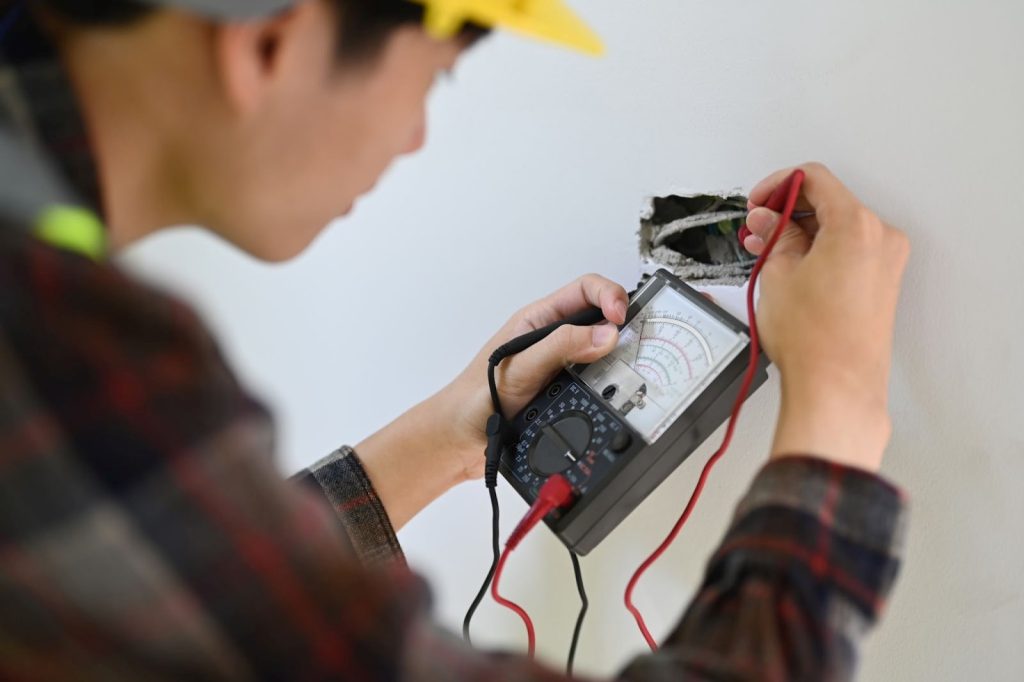Legionella is a potentially deadly bacterium that can be found in water systems, posing a significant risk to public health. It is the primary cause of Legionnaires’ disease, a severe form of pneumonia that can lead to hospitalization and even death. To protect people from Legionnaires’ disease, timely and appropriate action is essential when Legionella is detected in water systems. In this comprehensive guide, we explain the recommended actions to take when Legionella is detected in various water systems, including cooling towers, domestic water systems, and healthcare facilities, etc.
What is Legionnaires’ Disease?
Legionnaires’ disease is a severe and potentially life-threatening form of pneumonia. It is caused by inhaling small water droplets or mist that contain Legionella bacteria. This disease can affect anyone but is especially dangerous for individuals with weakened immune systems, chronic lung conditions, or other risk factors.
It typically presents with symptoms such as fever, cough, and difficulty breathing, often progressing to severe pneumonia. Early diagnosis and appropriate treatment are crucial for recovery.
Professional Legionella risk assessment
High-Risk Locations for Legionella Development
Legionella bacteria can proliferate in various water systems, but certain environments are particularly susceptible to its growth. Some of these high-risk types of water systems include:
- Cooling Towers: Cooling towers, commonly used in industrial settings for heat dissipation, provide an ideal breeding ground for Legionella due to their warm water temperatures and constant air circulation.
- Hot Water Systems: Legionella can thrive in hot water systems, such as those in residential buildings, hotels, and healthcare facilities. Maintaining safe hot water temperatures and conducting regular disinfection is crucial.
- Cold Water Systems: Legionella can also exist in cold water systems, especially when they are not adequately maintained. Stagnant water, dead legs, or biofilm formation can provide a conducive environment for bacterial growth.
- Spa Pools: Spa pools or hot tubs, which often operate at temperatures favorable for Legionella growth, can be a potential source of contamination.
- Healthcare Facilities: Hospitals and long-term care facilities are at higher risk due to the presence of immunocompromised patients and complex water systems. Legionella can be aerosolized during medical procedures and pose a severe threat to patients.
- Residential Water Systems: Legionella can be present in residential plumbing, including shower heads, faucets, potable water systems, and water storage tanks.
- Natural Water Sources: Natural water bodies, such as rivers, lakes, and ponds, can also harbor Legionella. Humans can be exposed when using these water sources for various purposes.
- Ice Machines: The interior of ice machines can be a breeding ground for Legionella if not adequately maintained and cleaned.
Risks Associated with Legionella
Legionella is a bacterium that can pose several significant risks to public health and infrastructure when present in water systems. These risks primarily revolve around the potential for Legionnaires’ disease outbreaks, the vulnerability of specific populations, and the financial and operational consequences of corrective actions. Here, we will delve into these risks associated with Legionella in more detail:
Disease Outbreaks
Legionella bacteria is a severe respiratory infection that can lead to pneumonia. The risk of disease outbreaks is one of the most critical concerns associated with Legionella. When Legionella contaminates water systems, and the bacteria are aerosolized or inhaled, it can result in multiple cases of illness among exposed individuals.
Outbreaks can occur in a variety of settings, including healthcare facilities, hotels, cooling towers, and industrial sites. Such outbreaks can lead to hospitalizations, severe illness, and, in some cases, fatalities as it can worsen issues such as kidney disease. The potential for widespread disease outbreaks emphasizes the urgency of preventive measures, regular monitoring, and prompt remedial actions to mitigate the risk.
Vulnerability of Specific Populations
Some individuals are more vulnerable to Legionnaires’ disease than others, amplifying the public health risks. Those with weakened immune systems, such as individuals with chronic illnesses, the elderly, and individuals undergoing certain medical treatments, are more susceptible to severe illness if exposed to Legionella.
This vulnerability makes healthcare facilities and long-term care facilities particularly high-risk areas, as they often house individuals with underlying health conditions. The presence of Legionella in water systems within these facilities can lead to severe health complications and increased mortality rates among these at-risk populations. Preventive measures and stringent water management programs are essential to protect these specific groups.
Financial and Operational Consequences
The detection of Legionella in a water system triggers the need for immediate corrective actions and remediation efforts. These actions can be costly and resource-intensive, as they often involve disinfection, cleaning, flushing, and, in some cases, the replacement of components within the water system. Furthermore, identifying and addressing the root causes of Legionella contamination may require significant investments in infrastructure improvements and long-term changes to water management practices.
The financial and operational risks associated with Legionella contamination are substantial. Facility managers and building owners must bear the financial burden of these corrective measures, potentially resulting in a significant expenditure. The disruption caused by remediation efforts can lead to downtime in facilities, impacting daily operations, and potentially resulting in reputational damage. The prevention and proactive management of Legionella risks are crucial to minimizing these financial and operational consequences.
How to Detect Legionella
Detection of Legionella is a critical step in preventing its spread. Several methods can be employed to identify the presence of the bacteria in water systems:
- Water Testing: Regular water sampling and laboratory testing can detect Legionella in water samples. These tests are typically conducted by competent professionals following established procedures.
- Environmental Assessments: Environmental samples can be collected to assess the presence of Legionella in the surrounding areas of water systems, providing additional information for risk assessment.
- Positive Samples: When Legionella is detected in water system samples or environmental assessments, it is crucial to establish action levels and take immediate action.
How long does it take to get Legionella test results?
Strategies to Eliminate Legionella from Water Sources
Eliminating Legionella from water systems is crucial to prevent the risk of Legionnaires’ disease and ensure the safety of water intended for human consumption. To achieve this, several key steps and control measures must be implemented, as outlined below:
Temperature Control
Maintaining the water at temperatures outside the Legionella growth range is one of the most effective methods of control. For hot water systems, the water temperature should be maintained above 122°F (50°C). Conversely, cold water systems should be stored below 68°F (20°C). Regular monitoring and adjustment of water temperatures are essential to prevent Legionella proliferation.
Disinfection
Disinfection is a critical step in getting rid of Legionella. Heat disinfection, a common method, involves raising the water temperature to a level that kills Legionella bacteria. This process should be performed by a competent person and follow established guidelines and regulations. Additionally, chemical disinfection methods can be employed, but these should be carefully monitored to ensure safety and effectiveness.
Flushing and Cleaning
Regular flushing of water systems, especially those with low water usage, helps prevent stagnant water and the accumulation of Legionella. Cleaning and disinfecting water system components, such as showerheads and faucets, eliminate biofilm and the potential hiding places for the bacteria.
Waterborne Pathogen Management
Legionella is one of several waterborne pathogens that can affect human health. Implementing a water safety plan, in accordance with regulatory guidelines, helps manage and mitigate the risks associated with Legionella and other pathogens. This plan should include routine monitoring and testing to ensure water quality parameters are within safe levels.
Water Management Program
Designating a water management program team is essential for effective Legionella control. This team should include competent individuals such as water treatment professionals who take a risk management approach to the threat of an outbreak of legionnaires. Regular assessments and revisions of the water management program are necessary to ensure ongoing compliance with safety standards.
Control of Nutrient Sources
Legionella thrives in environments with access to organic matter and nutrients. To get rid of Legionella, eliminating or controlling potential nutrient sources within water systems is crucial. This involves reducing biofilm formation and minimizing the buildup of sediments in water storage tanks.
Regular Monitoring and Testing
Conducting regular water testing is critical to detect the presence of Legionella in water systems. Sampling should be carried out by a competent person days after disinfection, following established procedures. Additionally, environmental assessments can provide valuable information on the presence of Legionella in the surroundings of water systems.
Timely Response to Positive Samples
When Legionella is detected in water system samples, action levels should be established to determine the appropriate corrective measures. Timely response to positive samples is essential to prevent further Legionella proliferation and mitigate health risks.
Compliance with Regulations
Compliance with local, state, and federal regulations is a fundamental requirement to prevent the risk of citation and ensure the safety of public water systems. Facilities and building owners must adhere to legislative requirements regarding Legionella management and acceptable risk levels.
Who is Responsible for Preventing and Treating Legionella?
Preventing and detecting Legionella contamination in water systems is a shared responsibility involving multiple parties, with each having specific roles and duties to ensure the safety of water intended for human consumption. Here is a list of each responsible person tasked with detecting and preventing Legionella:
- Facility Managers: Facility managers are responsible for overseeing the maintenance and safe operation of water systems within their facilities. They play a key role in implementing Legionella prevention measures and conducting risk assessments.
- Building Owners: Building managers and owners are accountable for ensuring the safety of water systems within their properties. They must adhere to legislative requirements and take measures to prevent Legionella contamination.
- Water Treatment Professionals: Water treatment professionals, including experts in water quality management, provide a practical guide on the best practices for Legionella prevention and assist in risk assessment and system improvements.
- Public Health Authorities: Local, state, and federal public health authorities, and even international regulations monitor and regulate Legionella prevention efforts. They establish guidelines, conduct inspections, and may enforce compliance through citations and enforcement actions.
- Legislative and Regulatory Bodies: Legislative bodies and regulatory agencies establish the legal framework for Legionella prevention. Compliance with these laws is essential to maintain acceptable risk levels in water systems.
Legionella Risk Assessment Services
Legionella Risk and PAT provides comprehensive Legionella risk assessment services to ensure the safety of water systems in various settings. Our team of experts can conduct thorough risk assessments, identify potential sources of Legionella contamination, evaluate water quality parameters, and implement control measures to mitigate the risk of Legionnaires’ disease.
With a strong focus on compliance with legislative requirements and best practices, we help our clients maintain water systems that meet acceptable risk levels, safeguarding public health and ensuring regulatory adherence. Our Legionella risk assessment services are designed to address the unique needs of different facilities, including healthcare institutions, commercial properties, and residential buildings, providing tailored solutions for Legionella prevention and control.


